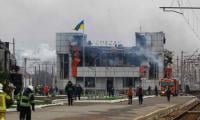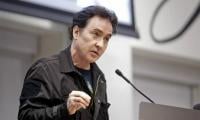As mentioned in the first part, most of the democratic, political and economic rights and freedoms that we enjoy today in the liberal democracies have been the result of mass actions, movements and struggles. The capitalist ruling class did not give away these rights and freedoms as gifts or as a goodwill gesture.
These rights and freedoms were won through struggles on the streets. Parliaments enacted laws and constitutional amendments to protect the rights and freedoms of women, workers and other sections of the populations after bitter struggles and mass movements that forced them to act.
For instance, capitalist democracy in the 19th century and in the beginning of the 20th century was a democracy of men. In the US, it was a democracy of white men as women and black population were denied the right to vote and other political rights. Women won the right to vote in 1920 after a decades-long struggle. In Britain, women won the right to vote in 1918.
The demand of an eight-hour working day was met with brutal repression. Workers were arrested, tortured, hanged and suppressed. Today, on May Day, the workers and trade union movement globally pays a tribute to all those labour activists who sacrificed their lives in Chicago in 1886. The working class won most of its economic and democratic rights after a lot of sacrifices and struggles.
The right to protest protects the rights of minority voices and also all those left behind by the political and economic system. The right of protest is the main difference between a functional democracy and a democratic dictatorship of the elite.
Direct action, in the form of mass protests, rallies, strikes and sit-ins played a major role in abolishing slavery, extension of electoral franchise, limiting ruthless aspects of the exploitation of labour and extending rights to women and minorities. This was done when protest and dissent was considered illegal and hardly tolerated. Now it has become a legal and constitutional right.
Some people also raise the question over why a democratic society needs the right of protest when we have courts, parliament, executive and a free media to raise issues and address them. Why do we need strikes, street protests and mass movements when we can replace a government through elections? Normally, people express their grievances and displeasure through the available administrative and democratic channels. But when parliament, executive and the judiciary fail to live up to their expectations, demands and aspirations then they resort to protest.
Now the question that arises here is: why do people protest on the street in the first place? Street protest is not the ultimate choice or option to solve an issue. Protest is the last resort. It comes on the table when all other options are exhausted.
Workers only organise strike action when they are left with no other option. They want to solve their problems through negotiations and normal channels. People only resort to mass protests when their hopes to bring a change in the economic and social conditions through elections and normal political process are diminished. Mass protests reflect on anger and discontentment among the people as well as the inability and failure of the ruling class and existing social, political and economic system to solve and address the basic problems of the masses.
It shows that the gap between the aspirations, needs and demands of the people and the ruling elite has widened to levels that cannot be bridged through normal political channels and structures. It reflects that both parliament and the executive have failed to act and deliver. People only take to the streets when they strongly feel and start to believe that their elected leaders and governments are not listening to their demands and cries.
They only take to the streets when there develops a strong belief in the wider sections of society that the political elite and state bureaucracy is not interested in solving their problems. They don’t take to the streets before exhausting other available avenues to address their grievances.
The right to protest protects the rights of minority voices and also all those left behind by the political and economic system. The right of protest is the main difference between a functional democracy and a democratic dictatorship of the elite.
People express their opposition to government policies and measures through street protest. Generally, people tolerate elected governments and allow them to complete their tenure and wait for elections to decide their fate. They only resort to mass protests when life becomes unbearable and economic and social conditions deteriorate.
Protests are a part of the democratic culture and system. The quality of democracy largely depends not only on free and fair elections but also on the strength of mass organisations and their ability to mobilise large numbers of people on the streets. The existence of strong political parties, trade unions, student organisations, women’s rights organisations and peasant movements guarantees a high quality of democracy and a more responsive elected government.
A democracy strengthens itself with increased participation of the people whether through elections or street protests. These are two different forms of mass expressions.
Concluded
The writer is a freelance journalist.















